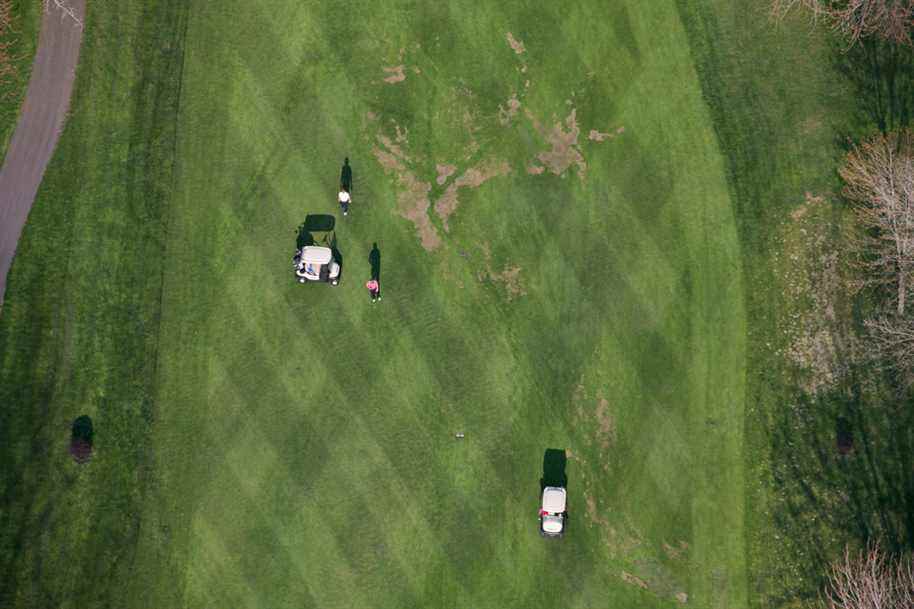In recent years, the loss of popularity of the practice of golf has resulted in the closure of several courses in the greater Montreal area. For a decade, more than a dozen of these sites have been put up for sale by their owners, and various projects have been proposed to citizens and elected officials of the municipalities concerned. In most cases, private interests propose to convert these spaces into new housing complexes and the public authorities are also eyeing industrial requalifications.
Posted at 6:00 p.m.
Asked about the issue, Valérie Plante, Mayor of Montreal and President of the Metropolitan Community of Montreal (CMM), said that an assessment of the ecological potential of the old golf courses should be carried out in order to consider their future. Three important dimensions of this dynamic, anchored in the principles of sustainable development, deserve to hold the attention of the citizens and stakeholders concerned in order to adequately understand the situation.
First of all, a golf course is a highly landscaped site which, over the years, has received tons of chemical inputs and where what is green is essentially used to roll a ball or to trap players. It is therefore normal that after decades of this type of development, the quality of the fauna and flora found there has been degraded.
However, when it comes to the ecological characterization of these sites, two visions are opposed. First, in standard practice, a design office looking at the current situation and seeking to find intact natural environments, vulnerable species or other elements of interest, would find little to chew on. . Inevitably, the report would then conclude that the ecological interest is rather weak and would consequently favor the development of the site.
Solution to the environmental crisis
However, if we change the telescope and instead adopt a regional vision, the conclusion could be quite different. The greater Montreal region is struggling to reach its target of 17% protected natural environments. And this, not to mention the loss of more than 80% of the ecological connectivity of its ecosystems in the last 50 years, an essential condition for maintaining biodiversity and the ability to fight against climate change.
In this perspective, by taking a regional look at the old golf courses, they could benefit from ecological restoration and be part of the solution to the environmental crisis, by creating new nuclei of natural habitats and production of ecosystem services. , such as carbon sequestration and water filtration.
From a social point of view, ecological restoration also presents itself as an advantageous option. Indeed, when we consider that, for decades, golf courses have benefited from municipal tax exemptions, it means that the population has paid for years to keep these places green. Why should these be offered today at low prices to promoters and thus contribute to the monopolization of the public good that is nature by the private sector? Without forgetting the underlying issue of environmental justice, while access to natural environments by the population is both more and more in demand, but constantly more difficult.
Finally, when we focus on the economic dimension, this argument is too often put forward by the public authorities to justify the supposedly inevitable reconversion of these sites. The cities and RCMs will then tell us that they do not have the necessary funds to acquire and restore them. However, in 2022, nothing could be further from the truth. Never has there been so much money in the Government of Canada to protect and restore natural environments. Not to mention the funds available in Quebec and from conservation organizations, as well as the eco-taxation tools available to cities and RCMs.
historic occasion
The CMM, with its environmental values and its leadership, could easily set up, like its program for the acquisition and conservation of wooded areas (Green Fund), a fund for the acquisition and restoration of old golf courses, which would be made available to cities and RCMs in its territory to channel positive ecological action.
Cities, RCMs and the CMM must reflect and act, along with citizens and experts, in order to seize a historic opportunity. It is rare that, in a metropolitan context, large green spaces are subject to the same dynamic and offer the opportunity to consider a substantial and organized transformation of the territory.
Will the decisions to come allow us to make a hole in one and consolidate nuclei of biodiversity, promoting the restoration of natural habitats and ecological connectivity, optimizing our potential for adaptation to climate change and reducing environmental inequities? Or on the contrary, will we play normal, with an acceleration of urban sprawl and the privatization of profits, to the detriment of the common good? Mme Plant, the ball is in your court.

